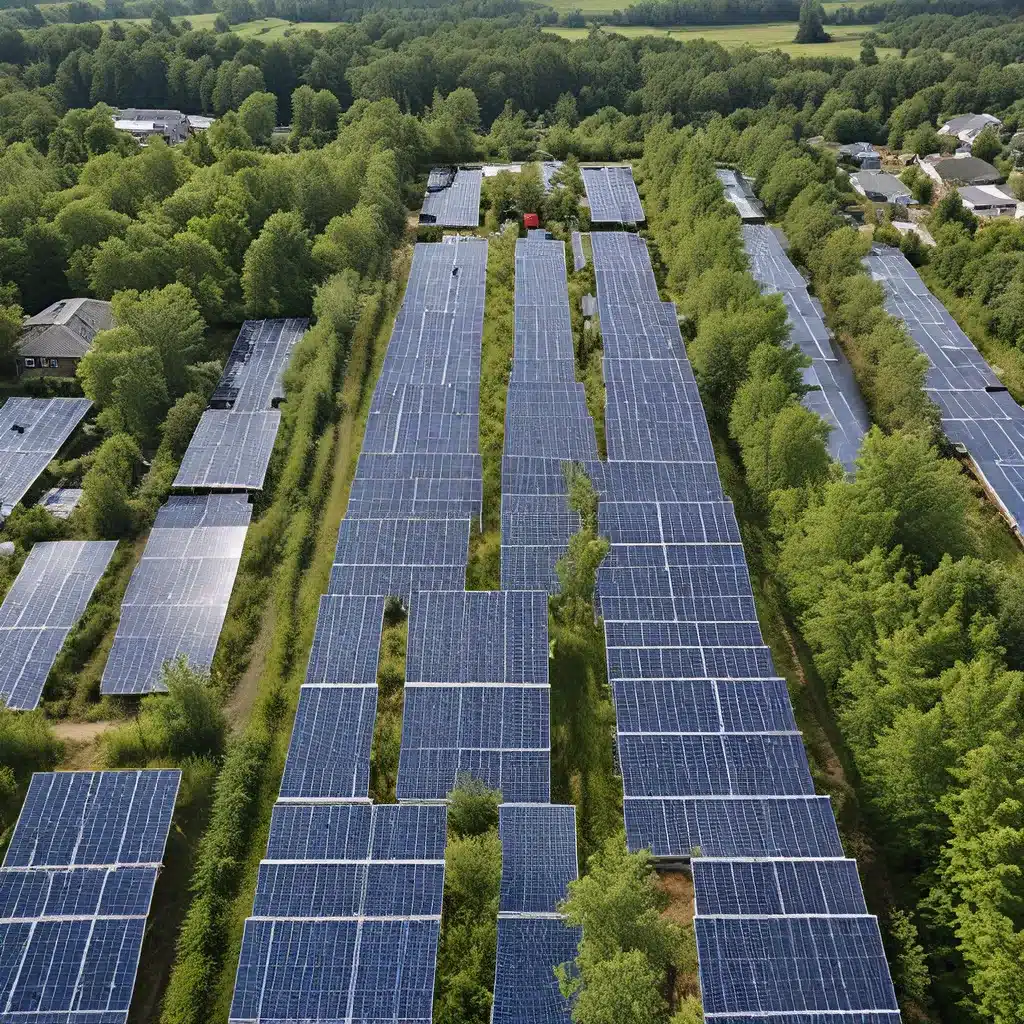
As someone who’s been fascinated by the power grid ever since my high school job writing software for the entity that controls the power grid in the Northwest, I’ve got to say – the world of renewable energy regulations is a real eye-opener. It’s this complex, interconnected system that can have some surprising ripple effects on the communities it touches. And let me tell you, it’s been a wild ride trying to wrap my head around it all.
The Grid Predicament: Outdated and Fragmented
Let’s start with the grid itself. I mean, this thing is just plain old. Most of our current transmission and distribution lines were built between the 1950s and 1970s, and they’ve only got about a 50-year life expectancy. So we’re talking about infrastructure that’s on its last legs, folks. And when you factor in the extreme weather we’ve been seeing more and more of these days, it’s a recipe for disaster.
But here’s the real kicker – our grid isn’t even a single, unified system. It’s this complicated patchwork of different utility companies and regional networks, all trying to do their own thing. And that lack of coordination? Well, it’s a big part of the reason we’ve got over 1,000 gigawatts of potential clean energy projects just sitting there, waiting to be approved. The transmission bottleneck, as they call it, is a huge barrier to unleashing the full potential of renewable power.
Renewable Energy Regulations: A Double-Edged Sword
Now, where do the regulations come into play, you ask? Well, renewable energy regulations are supposed to be the solution, right? They’re meant to incentivize the shift to cleaner power sources and encourage investment in the infrastructure we need. But the reality is, they can often have some pretty unexpected consequences at the local level.
Take the example of wind farms. Sure, they’re a great way to generate clean, renewable electricity. But when you start planting them in rural areas, you can disrupt the lives of the people who live there. Suddenly, they’ve got these massive turbines towering over their homes, changing the landscape they’ve known for generations. And the noise? Don’t even get me started. It can be a serious quality of life issue for some folks.
And it’s not just wind farms. Solar projects can also cause headaches for local communities. I’ve heard stories of entire neighborhoods fighting tooth and nail against the installation of solar panels, worried that it’s going to tank their property values. It’s a classic case of “not in my backyard” syndrome.
The Balancing Act: Serving the Greater Good vs. Local Needs
Now, I get it – we need to make the shift to renewable energy to combat climate change and build a more sustainable future. But at the same time, we can’t just steamroll over the people who are going to be directly impacted by these projects. It’s a delicate balancing act, and one that policymakers and renewable energy companies are still trying to figure out.
Some communities have found ways to integrate renewable projects in a way that benefits everyone. Like, for example, involving local stakeholders in the planning process from the very beginning. Or investing in community initiatives to offset any potential downsides. It’s all about finding that sweet spot where the greater good and the local needs can coexist.
And you know, innovative technologies could play a big role in this as well. Things like grid-enhancing technologies that can squeeze more juice out of the existing infrastructure, or advanced conductors and superconductors that can transmit power more efficiently over long distances. These kinds of breakthroughs could help us bridge the gap between the national clean energy goals and the realities on the ground.
The Road Ahead: Embracing Change and Community Engagement
At the end of the day, I believe that the transition to renewable energy is inevitable – it’s simply the most sustainable and cost-effective path forward. But how we get there, and how we ensure that the benefits are shared equitably, is going to be the real challenge.
It’s going to take a lot of creative thinking, community engagement, and policy innovation to find the right balance. We need to listen to the concerns of local residents, understand their unique needs and perspectives, and work with them to develop solutions that work for everyone. It’s not going to be easy, but I’m convinced that if we get it right, the payoff will be huge – cleaner air, more jobs, greater energy security, and healthier communities all across the country.
So, fasten your seatbelts, folks. Because the renewable energy revolution is just getting started, and the road ahead is going to be full of surprises. But if we can navigate it together, with open minds and a commitment to the greater good, I believe we can create a future that’s brighter, greener, and more equitable for all.

